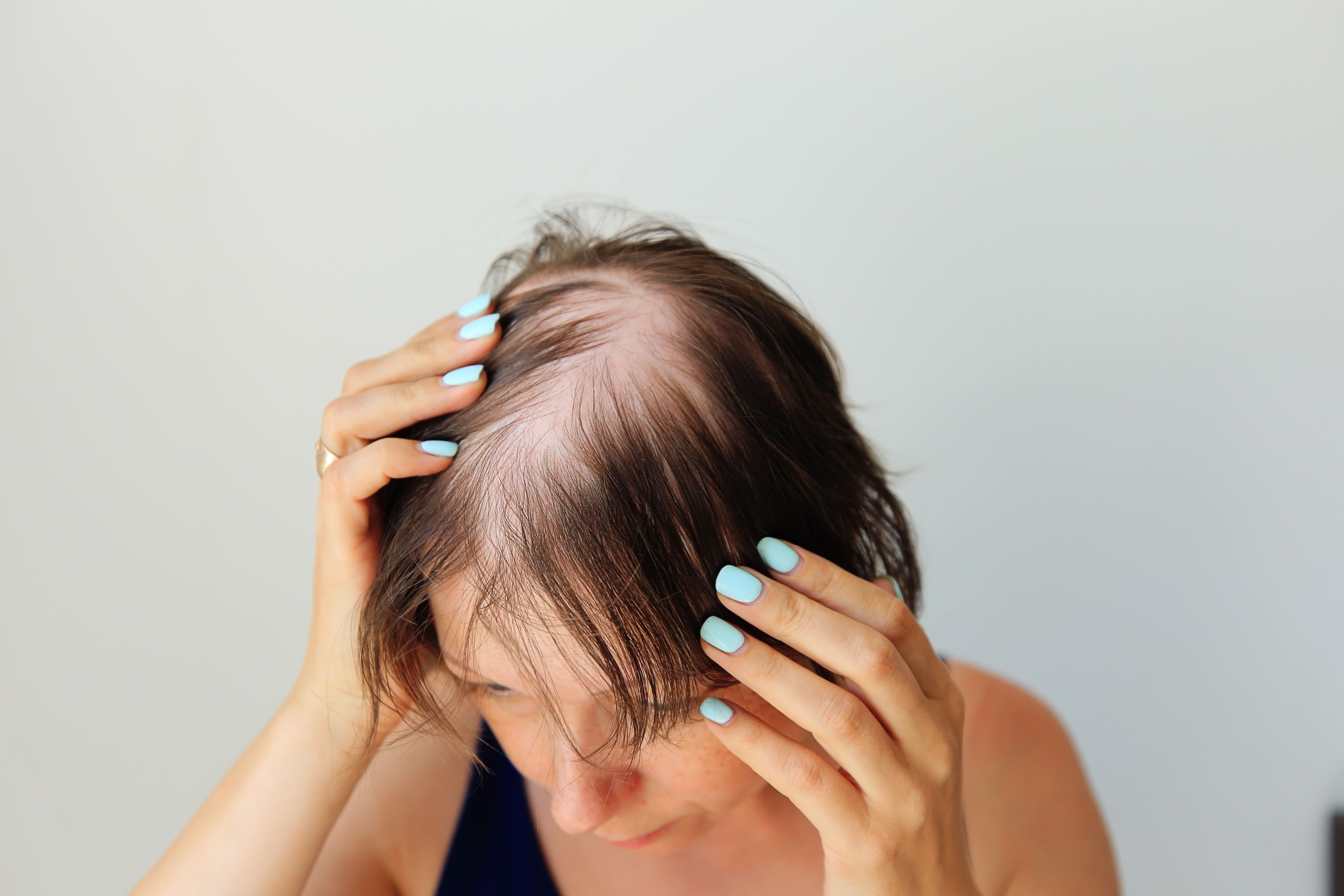- Case-Based Roundtable
- General Dermatology
- Eczema
- Chronic Hand Eczema
- Alopecia
- Aesthetics
- Vitiligo
- COVID-19
- Actinic Keratosis
- Precision Medicine and Biologics
- Rare Disease
- Wound Care
- Rosacea
- Psoriasis
- Psoriatic Arthritis
- Atopic Dermatitis
- Melasma
- NP and PA
- Skin Cancer
- Hidradenitis Suppurativa
- Drug Watch
- Pigmentary Disorders
- Acne
- Pediatric Dermatology
- Practice Management
- Prurigo Nodularis
- Buy-and-Bill
News
Article
PRP Therapy Shows Promise for Female Hair Loss
Author(s):
Recent studies found that PRP therapy leads to noticeable decreases in hair shedding and increases in hair thickness.
Image Credit: © troyanphoto - stock.adobe.com

Female pattern hair loss (FPHL) can arise from genetic predispositions, hormonal fluctuations, or medical conditions, with the main types being androgenetic alopecia (AGA) and telogen effluvium (TE).1 AGA involves progressive thinning primarily on the crown and frontal scalp, while TE is characterized by diffuse shedding due to stress or hormonal changes.2 Platelet-rich plasma (PRP) therapy enhances tissue repair and stimulates hair follicle activity, potentially offering advantages over traditional treatments like minoxidil and finasteride, which have limitations and adverse events.3 Despite its promise, existing studies on PRP's efficacy, particularly in women, suffer from methodological flaws and inconsistencies.4 A recent review aimed to address these gaps by analyzing randomized controlled trials to evaluate PRP's effectiveness and safety in treating various forms of female hair loss.5
Methods
The systematic review and meta-analysis performed a thorough literature search was conducted across several databases, including PubMed, EMBASE, and Cochrane Library, using relevant keywords. The study included female participants aged ≤ 18 with various hair loss types, receiving PRP therapy compared to alternative treatments or placebo. Data extraction and quality assessment were performed independently by reviewers, with consensus achieved through a third reviewer when needed. Subgroup analyses were based on predefined criteria, and study quality was evaluated using the Cochrane risk of bias tool.
Results
A total of 21 studies published between 2015 and 2023 were included in the analysis after removing duplicate records, animal trials, review articles and non-English studies. These studies focused on various hair loss conditions, including AGA, TE, and FPHL. The majority of studies used PRP therapy, either alone or combined with other treatments.
Researchers found that PRP treatment led to a significant decrease in the number of hairs pulled during hair pull tests and improved hair thickness and density compared to controls. However, they stated the effect on hair count showed a mixed outcome. Subgroup analyses showed that the greatest benefits in hair thickness and density were observed in patients with CTE, those treated for 6 months or more, and those receiving larger volumes of PRP. Despite significant results, there was evidence of publication bias, particularly regarding hair density and thickness. Risk of bias assessments revealed generally low risks across most domains, though researchers stated some concerns remained. The review stated adverse events associated with PRP treatment were mild and transient, including headache and scalp discomfort.
Conclusion
The review found that PRP therapy has proven to be an effective treatment for female hair loss, demonstrating significant improvements in hair density and thickness while maintaining a minimal side effect profile. This therapy, which leverages the body's natural growth factors to enhance hair follicle activity, offers a promising alternative to conventional treatments that can have more severe adverse events. The findings highlight PRP's efficacy in managing hair loss due to conditions such as AGA,TE, and FPHL, particularly when administered over extended periods and in higher volumes. Notably, PRP treatment's effectiveness varies based on factors such as the duration of therapy, volume injected, and potentially genetic or environmental influences.
Despite the encouraging results, researchers stated the high variability in study methodologies and potential publication bias suggest that further research is needed. They suggested that future studies should aim to standardize PRP preparation and application protocols, investigate long-term effects, and explore combination therapies to optimize treatment outcomes. According to the review, addressing these research gaps is crucial for establishing PRP as a mainstream and reliable solution for female hair loss.
References
- Shapiro J, Sicco KL, Otberg N, et al. Hair loss and restoration. CRC Press. 2024.
- Ramadan AA, Khaleel HM. Trichoscopic comparison between telogen effluvium and androgenic alopecia. Duhok Med J. 2023; 17(1): 51-63.
- Pixley JN, Cook MK, Singh R, et al. A comprehensive review of platelet-rich plasma for the treatment of dermatologic disorders. J Dermatolog Treat. 2023;34(1):2142035. doi:10.1080/09546634.2022.2142035
- Zhou S, Qi F, Gong Y, et al. Platelet-rich plasma in female androgenic alopecia: A comprehensive systematic review and meta-analysis. Front Pharmacol. 2021;12:642980. 2021. doi:10.3389/fphar.2021.642980
- Yuan J, He Y, Wan H, et al. Effectiveness of platelet-rich plasma in treating female hair loss: A systematic review and meta-analysis of randomized controlled trials. Skin Res Technol. 2024;30(8):e70004. doi:10.1111/srt.70004






